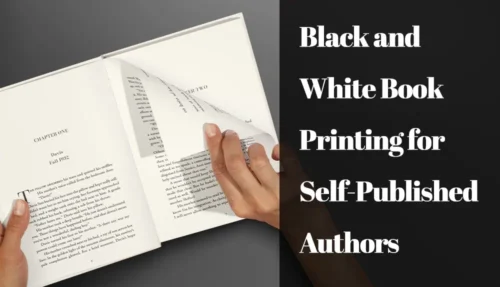A guide for university presses and independent scholars

In a world flooded with PDFs and e-readers, the printed academic book holds its ground. It might not shout the loudest, but it speaks with authority. Whether you’re a university press editor juggling production schedules, a department head overseeing a conference volume, or an independent scholar determined to get your monograph into library stacks, the way your book is printed still matters. In fact, it matters more than ever.
Offset printing—long the gold standard for professional publishing—offers an ideal combination of quality, flexibility, and cost-effectiveness for academic books, especially when print runs are in the hundreds or low thousands. But printing scholarly work isn’t the same as producing a trade paperback or a glossy photo book. Academic texts demand clarity, durability, and a high level of typographic care. And with the right print partner, that’s entirely within reach.
If you’re wondering where to start—or how to make sure your next academic title looks as professional as its content—this guide will walk you through the essentials.
| Topic | What to Consider |
|---|---|
| Book Types | Monographs, edited volumes, conference proceedings, textbooks, theses |
| Layout & Design | Footnotes, bibliographies, indexing, charts, tables, multilingual support |
| Paper & Binding | Opaque paper for dense text; durable binding like sewn or PUR perfect binding |
| Run Size & Cost | Offset becomes cost-effective for runs of ~300+ copies |
| Professional Finish | Options like foil stamping, dust jackets, matte/gloss lamination |
| File Prep | High-res PDF/X files, embedded fonts, consistent margins, clean pagination |
| Shipping & Distribution | Bulk shipping to institutions, events, or international locations |
Why academic books still deserve high-quality printing
There’s a quiet prestige to a well-printed academic book. Unlike digital files, a printed text is visible on office shelves, passed between colleagues, archived in libraries, or set proudly on an author’s desk. It’s not just about format—it’s about presence.
Printed books lend weight to ideas, and for many in academia, they still function as the gold standard of scholarly legitimacy. Even as open-access models gain traction, physical books remain an essential complement to digital dissemination, especially for institutional recognition, tenure committees, or long-term preservation.
Common academic book formats
Academic publishing isn’t one-size-fits-all. Here are a few of the most common formats that offset printing supports beautifully:
- Monographs – Original research by a single author, often the cornerstone of scholarly output.
- Edited volumes – Collections of chapters by different authors, typically organized around a shared theme.
- Conference proceedings – Bundled papers or abstracts from academic events, often needed on a tight timeline.
- Theses and dissertations – Personal or institutional archives often call for printed versions, especially in hardback.
- Textbooks and teaching guides – Often custom-created for specific courses, departments, or regions.
Each type comes with its own challenges, but they all benefit from a professional printing process that’s designed to handle academic content with care.
Layout considerations for scholarly books
Academic books often include design complexities you won’t find in a novel or self-help title. Think:
- Dense blocks of footnotes or endnotes
- Bibliographies that span several pages
- Charts, tables, maps, or graphs that must print cleanly
- Multilingual content or special characters
- Indexes and cross-referencing elements
Good print layout makes sure all of this information is easy to read and professionally presented. That means careful attention to margins, clear hierarchy of headings, and fonts optimized for legibility—especially at small sizes.
If you’re working with a designer or typesetting your book yourself, make sure to build in extra margin space for thick books, align all elements to a grid, and use software like Adobe InDesign to export a print-ready PDF.
Paper, Ink, and Binding
When printing academic books, your choices in paper and binding aren’t cosmetic—they directly affect usability.
- Paper: For books with dense text, a slightly off-white paper (such as cream or natural white) is easier on the eyes than bright white stock. Choose a higher opacity (90 gsm or thicker) to avoid show-through.
- Ink: Black-and-white printing with offset presses yields sharp, high-contrast text that’s ideal for small print and intricate detail.
- Binding: For academic works, sewn binding or perfect binding adds durability, especially for reference-heavy books that get frequent handling. Hardcover options with cloth, foil, or dust jackets are ideal for libraries or commemorative editions.
How offset printing fits academic budgets
Offset printing gets more cost-effective the more you print. For university presses, departments, or authors expecting to distribute 300 or more copies, offset can significantly reduce the per-book price compared to print-on-demand (POD) services—while offering better quality.
Even small research groups or independent scholars can make offset work if they plan ahead, coordinate with collaborators, or budget for bulk distribution to conferences, classrooms, or partner institutions.
Add to that the flexibility to print in multiple formats—hardcover for libraries, paperback for students—and offset becomes not only economical but versatile.
Tips for preparing print files
You don’t need to be a production expert to submit print-ready files, but a few simple practices will save you time and money:
- Export to PDF format
- Embed all fonts and images
- Set correct bleed and trim marks
- Use consistent styles and pagination throughout
- Double-check the spine width if designing the cover yourself
Most professional printers (us included!) are happy to check your files before the job goes to press. A short review can prevent long delays.
FAQs: Printing Academic Books
1. Can I print an academic book in a small run (under 500 copies)?
Yes. Offset printing is cost-effective starting around 300–500 copies, but we can also quote for smaller runs depending on format and content.
2. Do you print in multiple languages or character sets (e.g., Arabic, Mandarin, Cyrillic)?
Absolutely. Our typesetting-compatible printing supports a wide range of international character sets. Just make sure your PDF uses embedded fonts.
3. What file format should I submit?
A high-resolution PDF, with embedded fonts and images. We’ll provide guidelines to help you prepare your files.
4. Can you print books with charts, graphs, or photos?
Yes. Offset printing delivers excellent quality for grayscale images, charts, and high-detail elements. Color printing is also available if required.
5. Do you offer hardcover binding with dust jackets or foil stamping?
Yes. We offer a full range of finishing options, including case binding, dust jackets, cloth covers, foil stamping, and more.
6. Can I ship printed books directly to a university or conference?
Definitely. We regularly handle bulk shipping to institutions, bookstores, and events worldwide.
7. What's the typical turnaround time for an academic book project?
Turnaround depends on the book’s specs and volume. For offset runs, it’s typically 2–4 weeks from final file approval to shipping.
Talk to us. We're here to help!
Academic publishing is an investment in both content and credibility. And while ideas drive the work, format shapes the way it’s received. When your book is printed well—clearly, durably, and beautifully—it honors the effort that went into writing it.
We’ve worked with universities, departments, research institutes, and independent scholars worldwide to bring their academic books into print. If you’re ready to print a monograph, field manual, or textbook that looks as smart as it reads, we’d love to help.
Get in touch for a free consultation or quote. Just shoot us an email at [email protected] or call us at +1 530 238 5010, and we’ll be delighted to discuss your needs. We’ll walk you through your options and help you choose the right specs for your book—and your budget.










